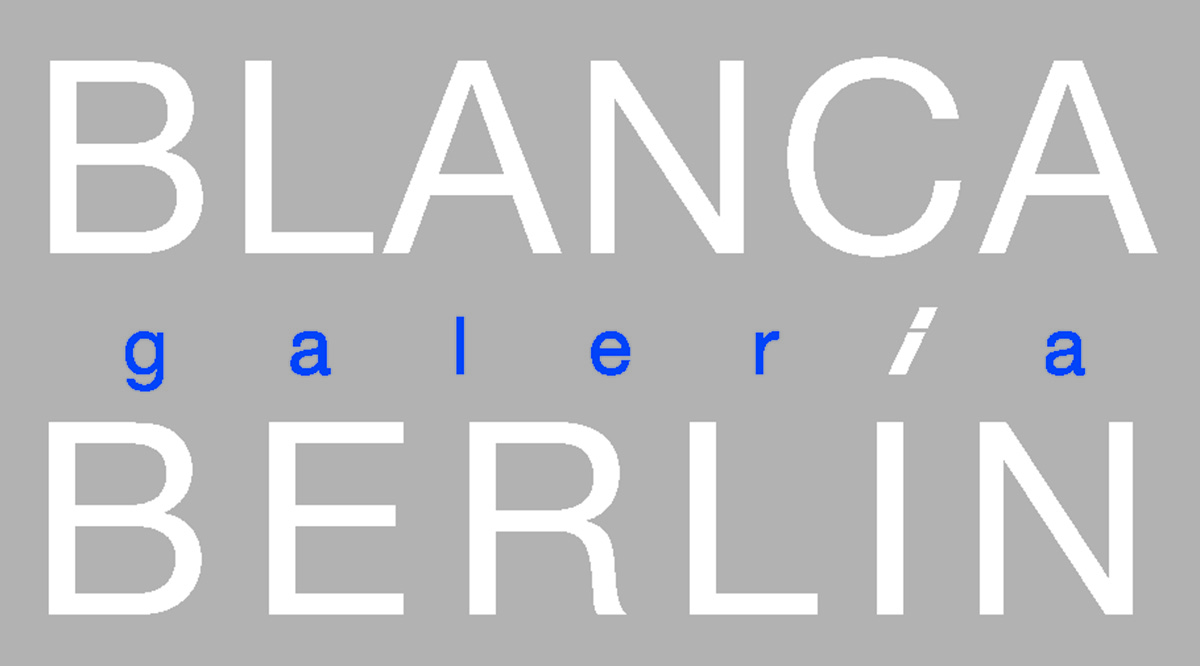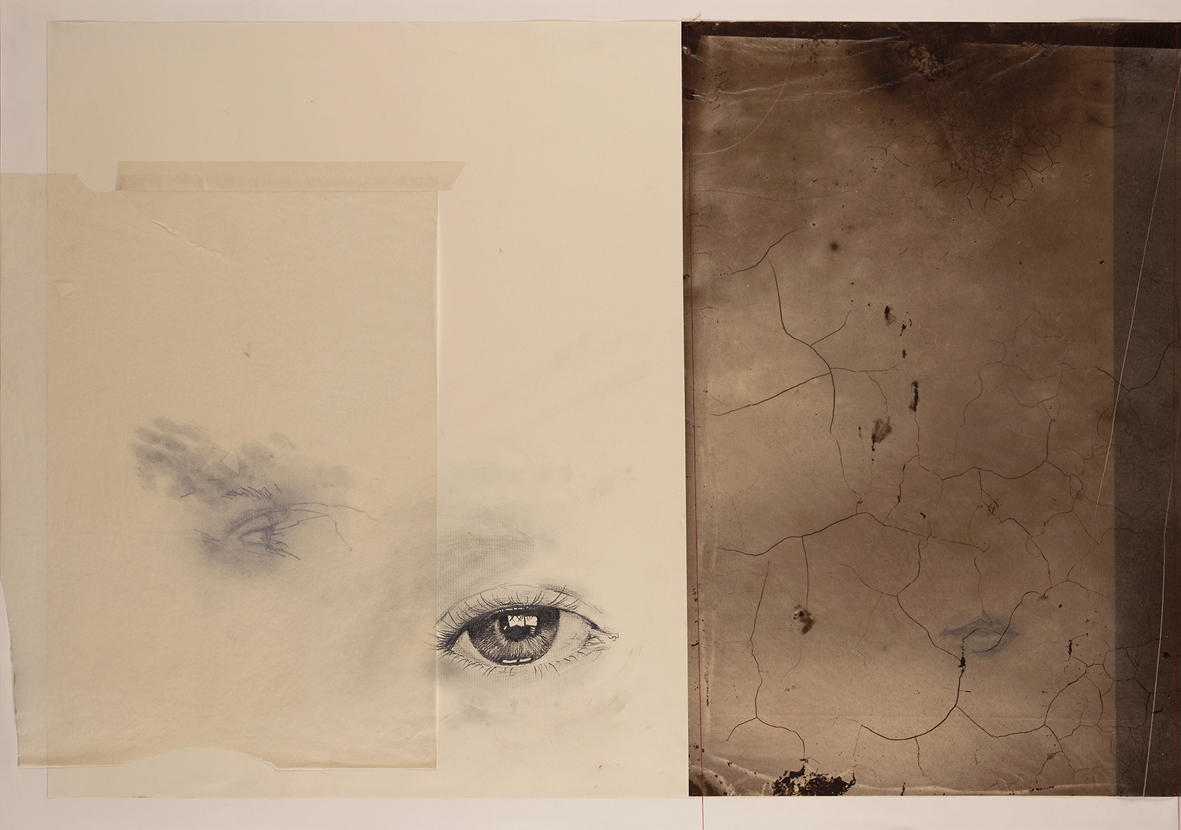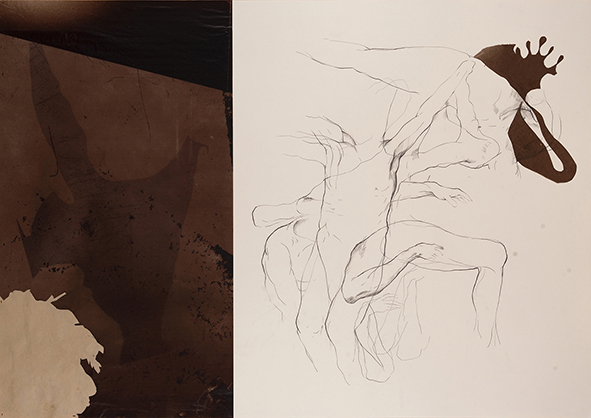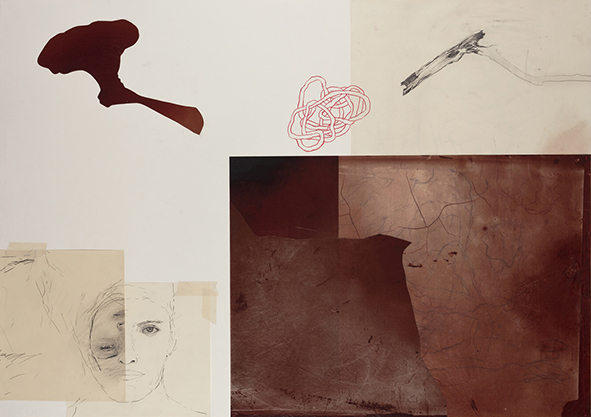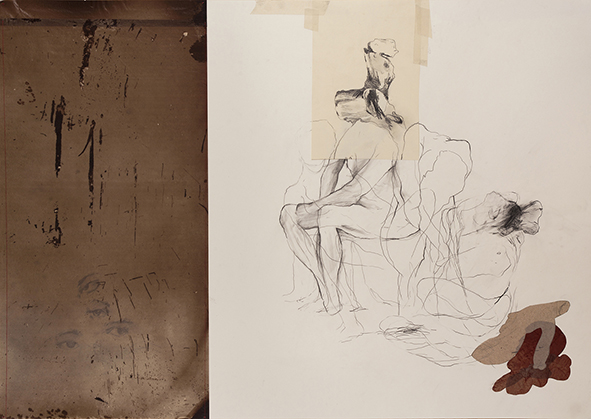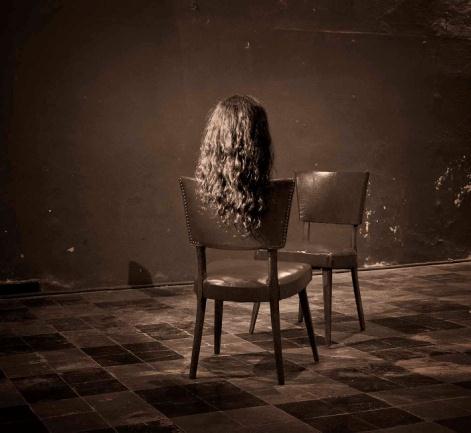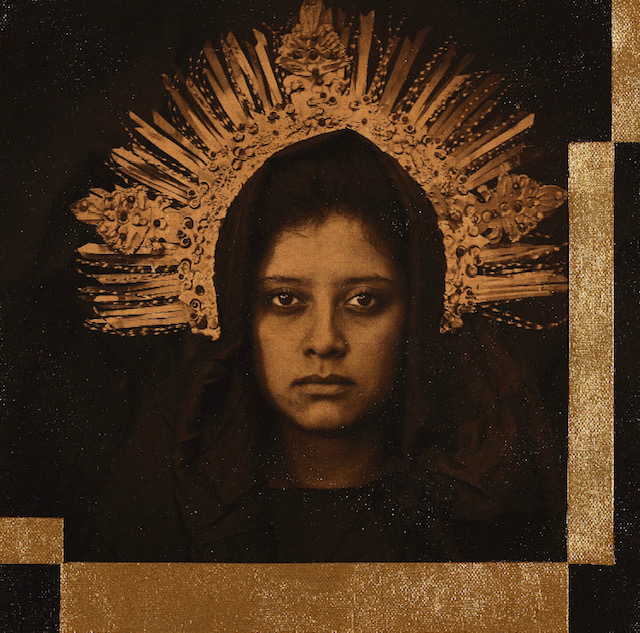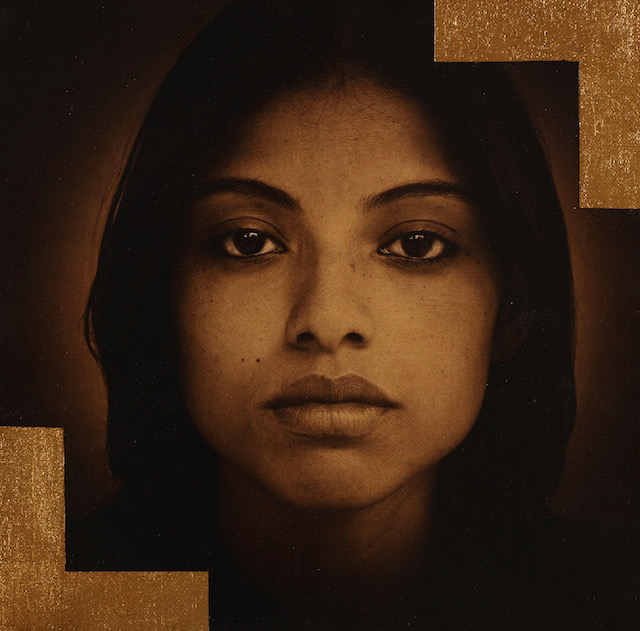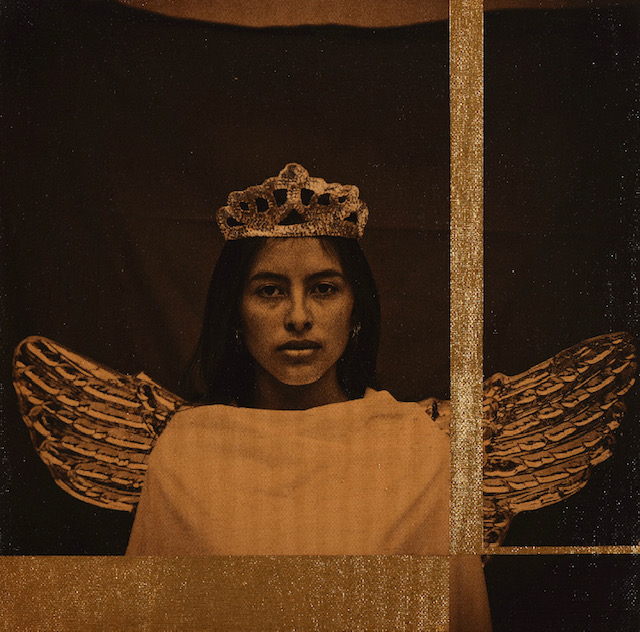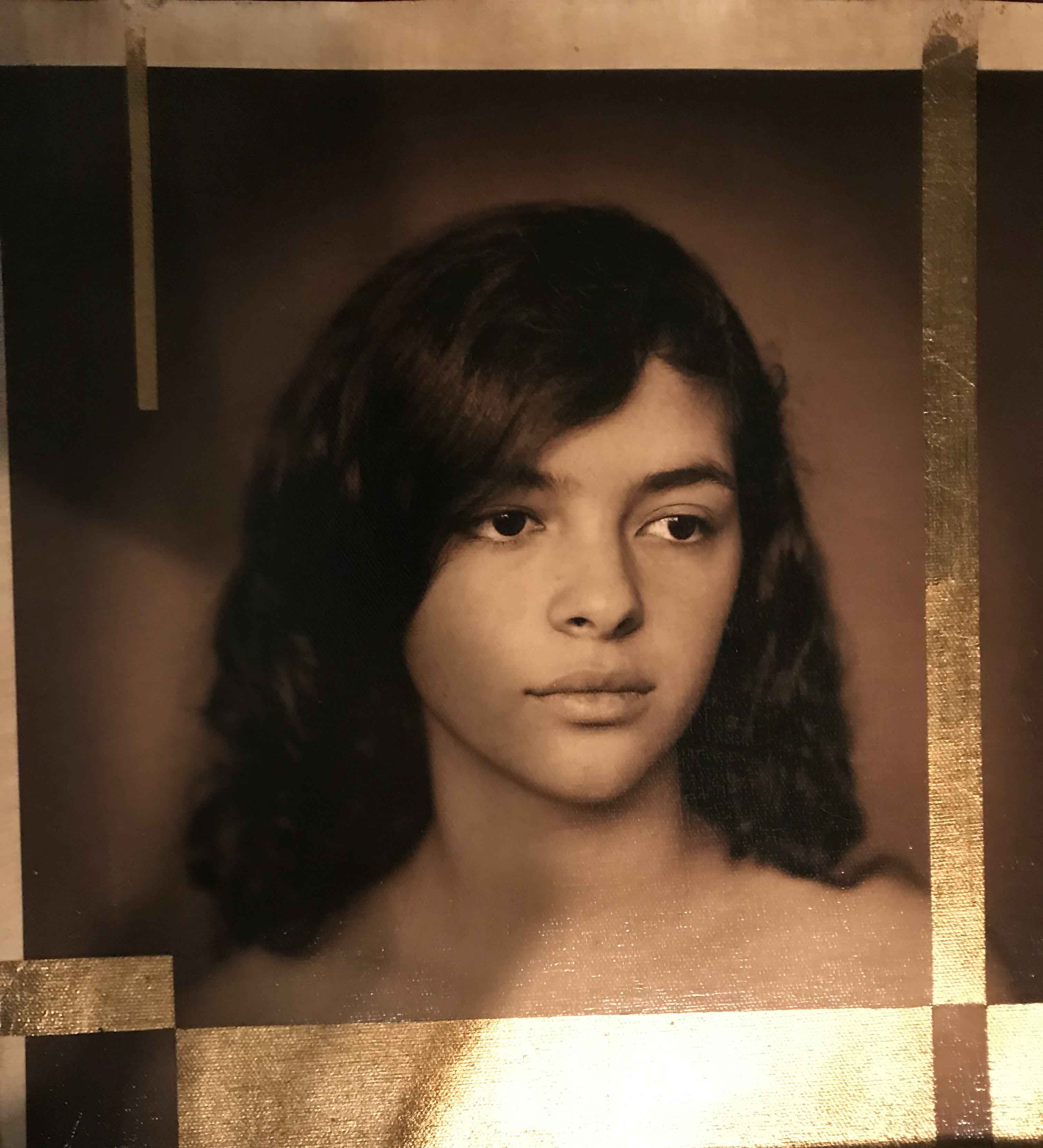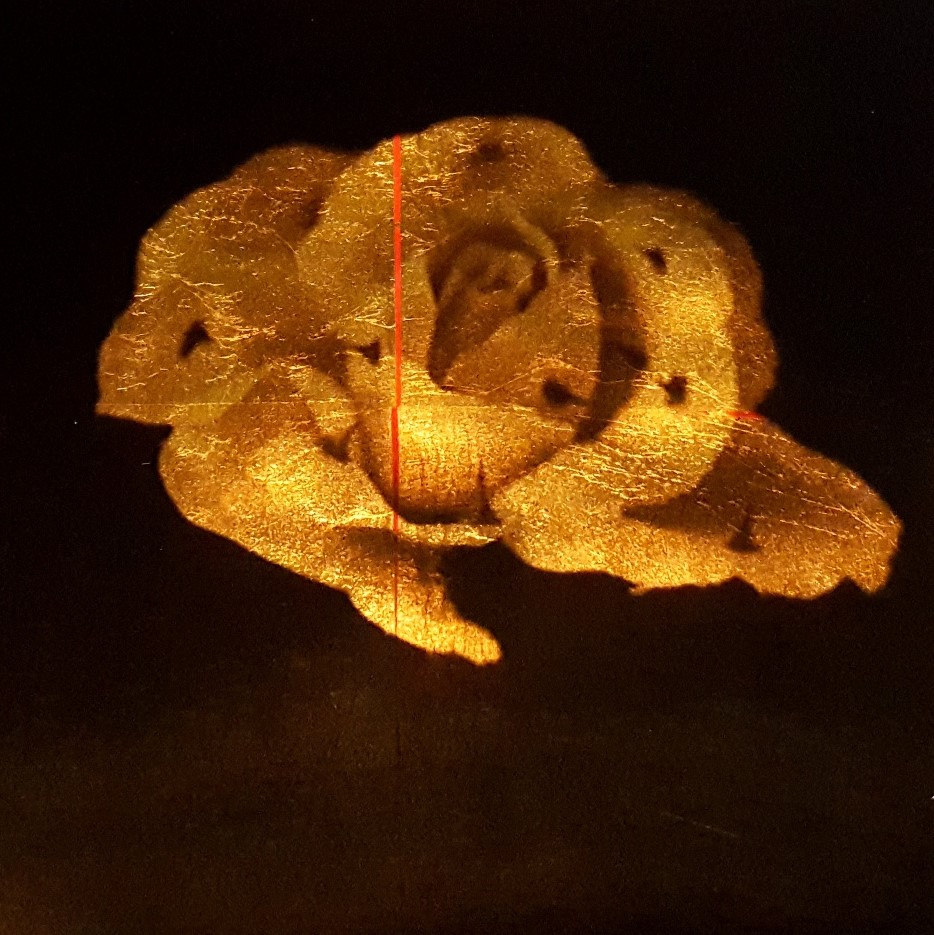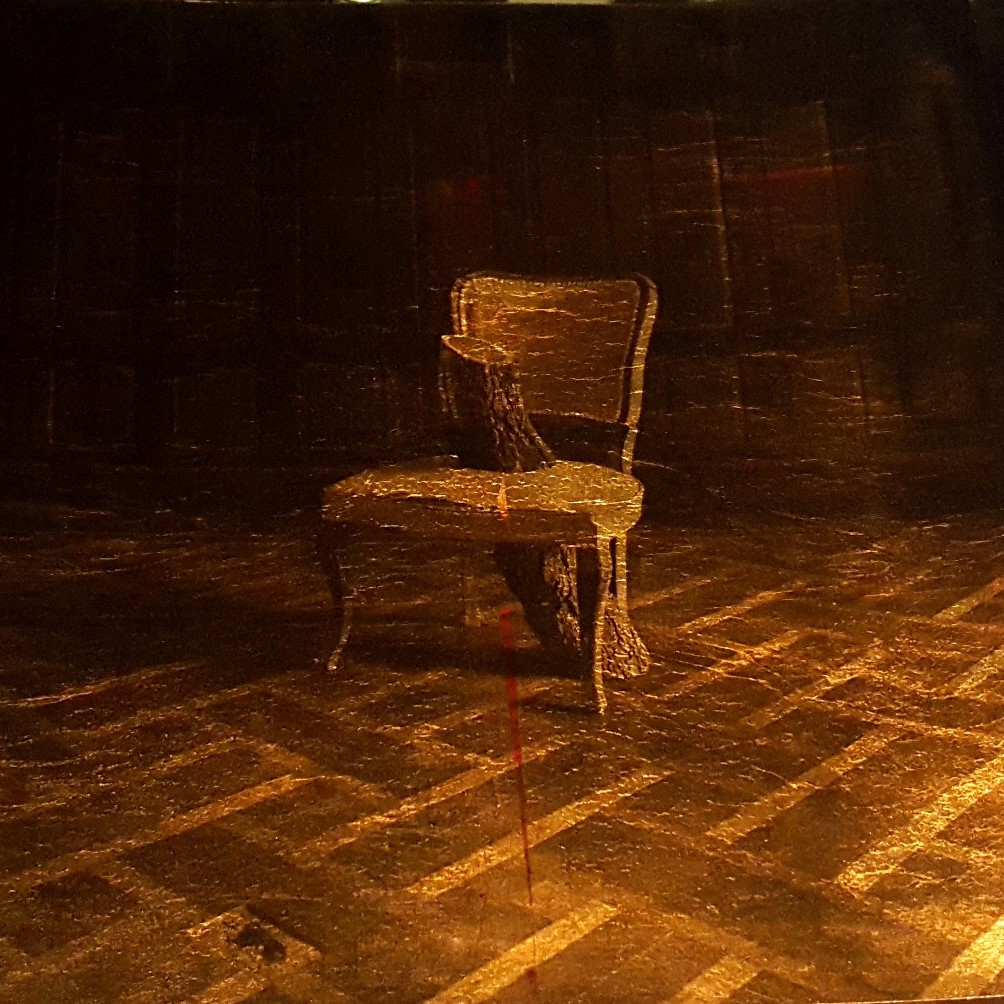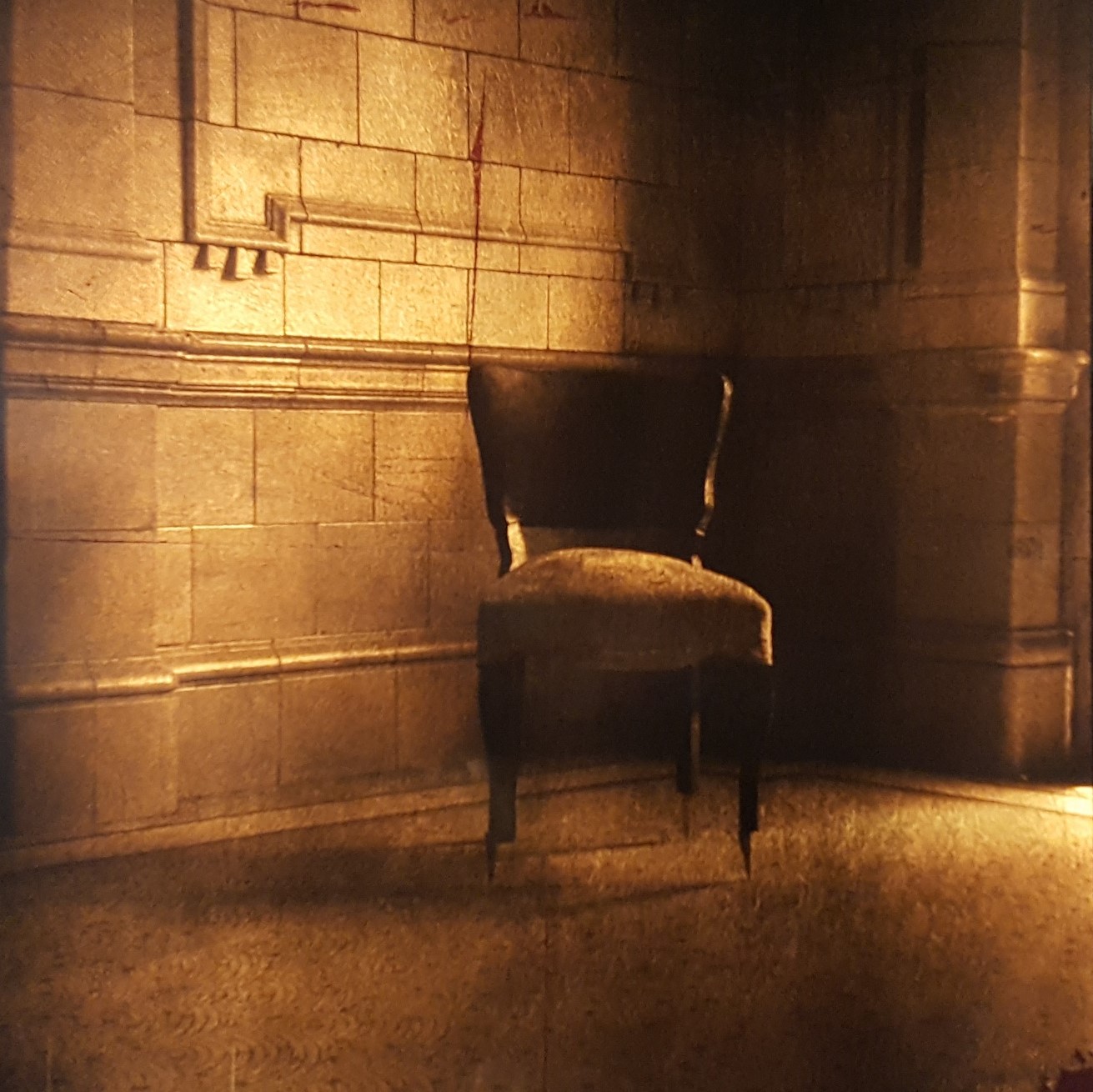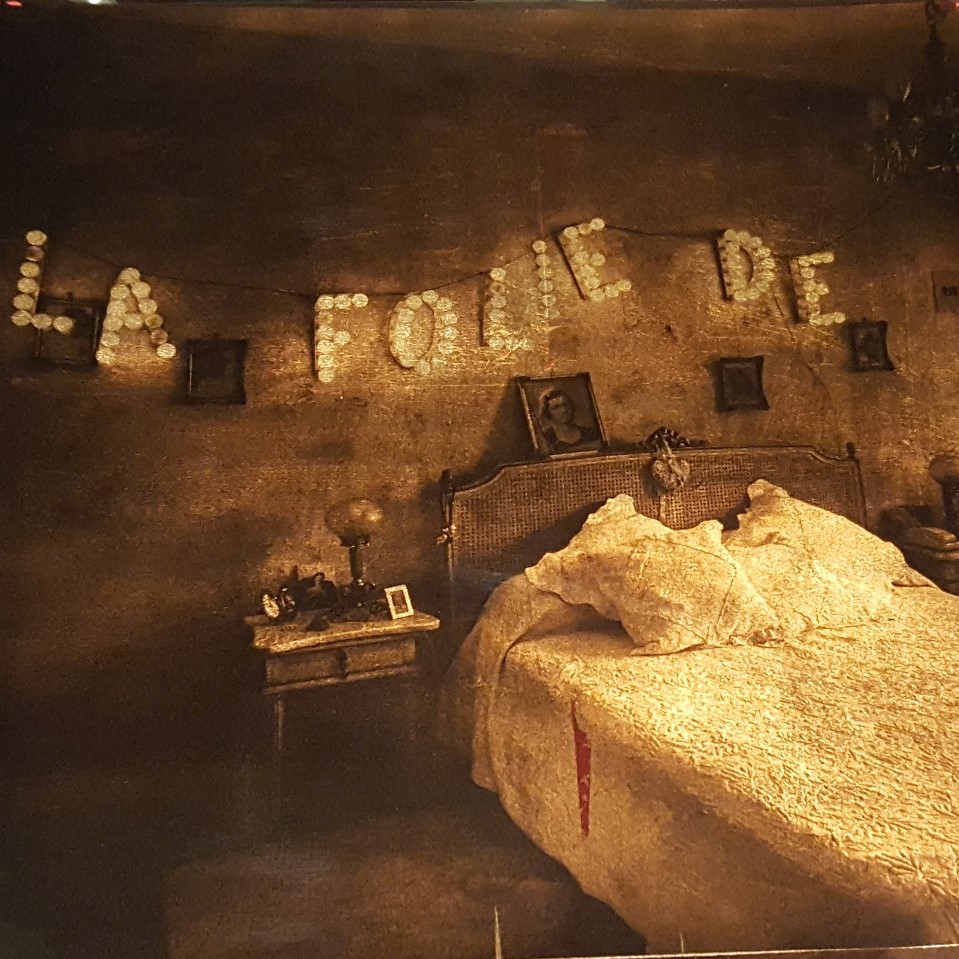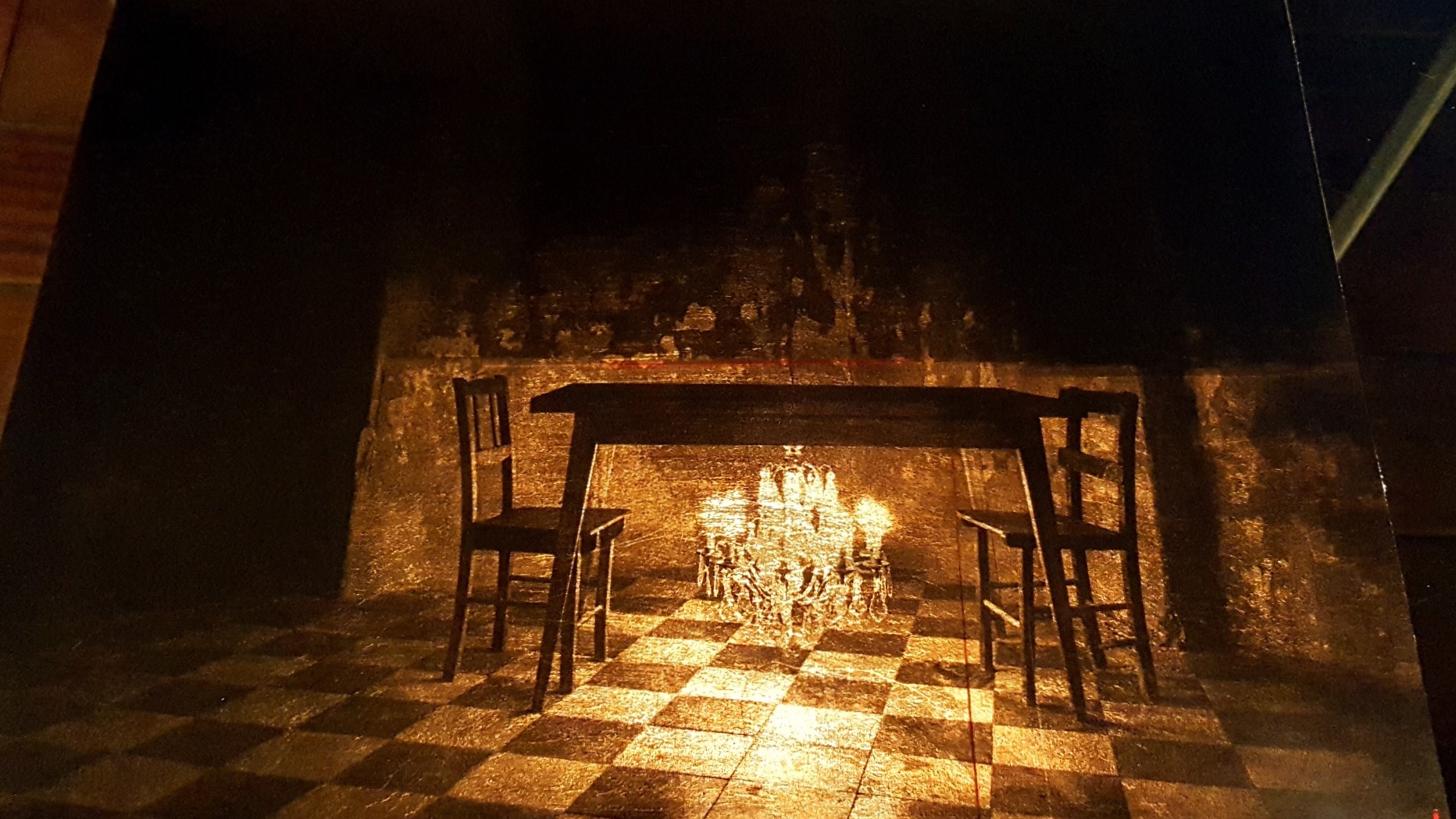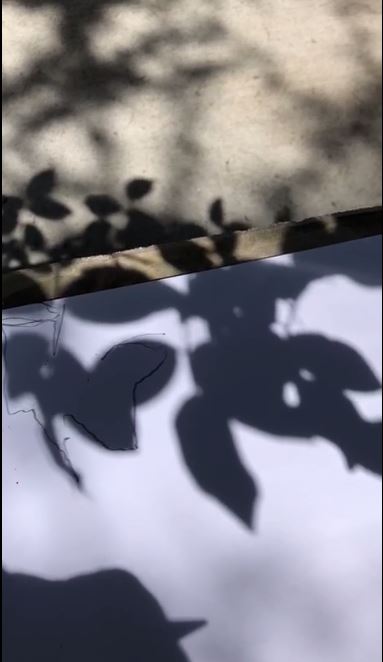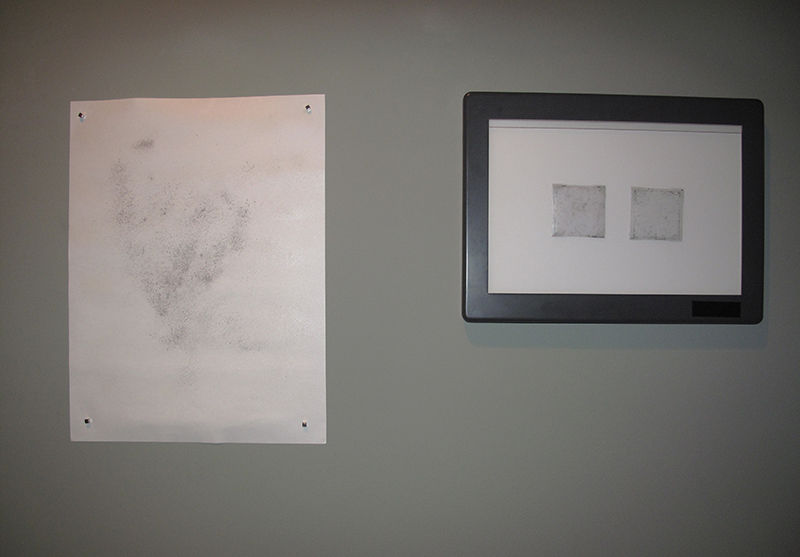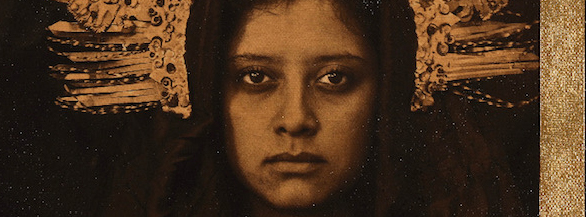
Exilio. Pasar a través de lo humano
Luis González Palma
25.04.19 – 01.06.19
Siempre tuve el deseo de “afectar” mi obra fotográfica con la presencia de mi cuerpo. Desde los inicios de mi trabajo utilicé la pintura y la veladura como formas de intervención sobre la imagen fotográfica. Por alguna razón, sentía que la imagen fotográfica en sí carecía de una caricia corporal, de la presencia de un cuerpo que la dotara de un aura especial. Pintar la fotografía, rasgarla, pegarla, romperla fueron estrategias que fui inventado para poder tocar mi propia mirada, o la huella de mi mirada. Sentía que esta presencia del gesto habilitaba a la imagen para mostrarse desde otra dimensión.
Pasaron muchos años hasta que me atreví a usar mi cuerpo directamente sobre una superficie en blanco. Es sabido que, en la fotografía, las imágenes surgen sin la presencia directa del cuerpo: “por primera vez la imagen no nacía en el cuerpo (o con el cuerpo) sino fuera del cuerpo”, como señala Fontcuberta en relación a la invención de la fotografía, y esa idea es algo que siempre he tenido presente.
Exilio es un paso adelante, o a un lado, en mi proceso. Dibujar es una experiencia que me es afín pero que desconozco de alguna forma, en donde me siento afuera pero que atesoro, es la posibilidad de plasmar directamente, sin mediación técnica, mi forma de entender el mundo. Es a partir de estos collages en donde trato de reflejar sensaciones que no puedo mostrar de otra forma, dibujando, borrando, pintando, pegando, así es como me he ido “exiliando” de la fotografía. Pero, como todo exiliado, llevo siempre conmigo algo de recuerdo, retazos de fotografías abstractas que sigo integrando en la composición para estar acompañado en un territorio que no es el usual en esta práctica.
Este proyecto me ha dejado la mente alterada, ha sido una aventura hacia el temor, la duda, la incertidumbre en torno a la idea de la representación. Con Exilio he deseado recorrer un camino hacia el silencio de la línea, entablar una lucha contra mis temores para tratar de recuperar gestos de mi infancia, intentando que sea la mano quien dibuje lo que todavía no puede imaginar, lo que solamente intuye.
I always had the desire to «affect» my photographic work with the presence of my body. From the beginning of my work I used painting and glaze as forms of intervention on the photographic image. For some reason, I felt that the photographic image itself lacked a corporal caress, and the presence of a body that would attribute it a special aura. To paint the photograph, to tear it, to stick it, to break it, were strategies that I used in order to find my gaze, or the imprint of it. I felt that through these interventions I enabled the image to be read from another dimension.
Many years passed until I dared to use my body directly on a blank surface. It is known that, in photography, images arise without the direct presence of the body: «for the first time the image was not born in the body (or with the body) but outside the body», as Fontcuberta points out in relation to the invention of photography, which is an idea that I’ve always had in mind.
“Exilio” is a step forward in my process. Drawing is an experience that is related to me, yet I don’t feel like I master this technique. It is a medium where I feel like an outsider, but it gives me the possibility of exploring and expressing directly a way of understanding the world. It is through these collages that I try to reflect sensations that I cannot show otherwise. By drawing, erasing, painting, and hitting I have «exiled» myself from photography. But, like all exiled, I always carry with me memories, fragments of abstract photographs that I continue to integrate into the composition, in a territory that is not the usual to the medium itself.
This project has left my mind altered, it has been an adventure towards fear, doubt, uncertainty around the idea of representation. With “Exilio” I have wanted to walk a path towards the silence of the line, to fight my fears and to try to recover gestures of my childhood, allowing my hand to draw what I cannot yet imagine, but can only intuit.”
Exilio #11, 2018
Impresión en Canvas mas lámina de oro y betún de Judea 70 x 100 cm Ed. Única
consultar disponibilidadExilio #5, 2018
Impresión en Canvas mas lámina de oro y betún de Judea 70 x 100 cm Ed. Única
consultar disponibilidadExilio #6, 2018
Impresión en Canvas mas lámina de oro y betún de Judea 70 x 100 cm Ed. Única
consultar disponibilidadExilio #8, 2018
Impresión en Canvas mas lámina de oro y betún de Judea 70 x 100 cm Ed. Única
consultar disponibilidadExilio #13, 2018
Impresión en Canvas mas lámina de oro y betún de Judea 70 x 100 cm Ed. Única
consultar disponibilidadExilio #14, 2018
Impresión en Canvas mas lámina de oro y betún de Judea 70 x 100 cm Ed. Única
consultar disponibilidadLuis González Palma. ST. Exilio 2013-2018
Fotografía teñida con betún de judea / Photography dyed with bitumen
consultar disponibilidadMöbius, 2019
Impresión en Canvas, lámina de oro y betún de Judea 30 x 30 cm Ed. 5
consultar disponibilidadMöbius, 2019
Impresión en Canvas, lámina de oro y betún de Judea 30 x 30 cm Ed. 5
consultar disponibilidadMöbius, 2019
Impresión en Canvas, lámina de oro y betún de Judea30 x 30 cmEd. 5
consultar disponibilidadMöbius, 2019
Impresión en Canvas, lámina de oro y betún de Judea 30 x 30 cm Ed. 5
consultar disponibilidadMöbius, 2019
Impresión en Canvas, lámina de oro y betún de Judea 30 x 30 cm Ed. 5
consultar disponibilidadMöbius, 2019
Impresión en Canvas, lámina de oro y betún de Judea30 x 30 cmEd. 5
consultar disponibilidadCometa Halley. Serie Koan, 2016
Impresión digital sobre papel cebolla. 150 x 150 cm Ed. 5
consultar disponibilidadST. 210 x 210 cm. Impresión digital en papel de arroz
Impresión digital en papel de arroz 210 x 210 cm
consultar disponibilidadST. Serie Jerarquías de la intimidad, 2018
Película ortocromática sobre láminas de oro. 30 x 30 cm
consultar disponibilidadST. Serie Jerarquías de la intimidad, 2018
Película ortocromática sobre láminas de oro. 30 x 30 cm
consultar disponibilidadST. Serie Jerarquías de la intimidad, 2018
Película ortocromática sobre láminas de oro. 30 x 30 cm
consultar disponibilidadST. Serie Jerarquías de la intimidad, 2018
Película ortocromática sobre láminas de oro. 30 x 30 cm
consultar disponibilidadST. Serie Jerarquías de la intimidad, 2018
Película ortocromática sobre láminas de oro. 30 x 40 cm
consultar disponibilidadST. Serie Jerarquías de la intimidad, 2018
Película ortocromática sobre láminas de oro. 30 x 30 cm
consultar disponibilidadST. Serie Jerarquías de la intimidad, 2018
Película ortocromática sobre láminas de oro. 30 x 40 cm
consultar disponibilidadST. Serie Jerarquías de la intimidad, 2018
Película ortocromática sobre láminas de oro. 30 x 40 cm
consultar disponibilidadJuegos infantiles día gris y lluvioso ríen los bosques (unidas)
Polvo de plata sobre papel
consultar disponibilidad